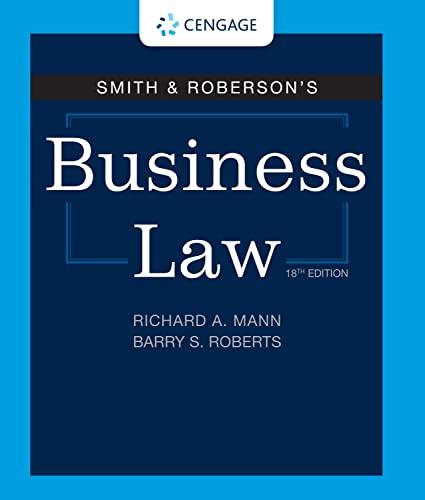Question
The year is 2025 and President X has just been inaugurated in the United States as the 47th President. President X campaigned on health reform
The year is 2025 and President X has just been inaugurated in the United States as the 47th President. President X campaigned on health reform and is particularly interested in reforming Medicaid because of recent growth in federal government spending on the Medicaid program. President X is a Republican but does not have a majority in Congress, and thus, the President's advisors have suggested that legislative reform will not be possible with the current Congress. Accordingly, President X has directed his administration to accomplish reform administratively. Immediately after the President's transition team arrived at U.S. Department of Health and Human Services (HHS), HHS officials began encouraging states to apply for a Healthy Adult Opportunity demonstration project to transform their Medicaid programs. (Please click the hyperlink to review this Medicaid demonstration project opportunity.) State Y, a state that adopted the Medicaid expansion under its state plan after the enactment of the Affordable Care Act, has been concerned about its rising Medicaid costs, especially after the COVID-19 pandemic, and does not believe the current levels of state expenditures are sustainable. The Governor of State Y was very excited to see the new administration's support for this demonstration project opportunity under section 1115 of the Social Security Act (the Act) and directed State Y's Medicaid agency to work furiously to develop and submit a Healthy Adult Opportunity demonstration proposal to the Centers for Medicare & Medicaid Services (CMS) in HHS. In its demonstration application, the State proposes to use the authority under section 1115(a)(2) of the Act to cover the individuals currently enrolled through the State's Medicaid expansion under the state plan and, at least initially, the State proposes to provide the same level of benefits to this population that they are currently receiving through the Medicaid expansion under the state plan, while implementing a per capita cap funding cap under which federal expenditures under section 1115(a)(2) of the Act will be limited on an annual basis over the life of the demonstration. Additionally, the State proposes to newly cover individuals with incomes up to 150% of the poverty level to reduce churn in and out of Medicaid (and associated state administrative costs) for individuals with incomes between 138% of the poverty level and 150% of the poverty level because individuals in this income band are very likely to see regular income fluctuations. This population will be eligible for Medicaid for the first time under the proposed demonstration. To accomplish the shift of people from the state plan's Medicaid expansion group to the Healthy Adults Opportunity initiative 1115 demonstration project, the State's proposal explains that the State intends to un-expand its Medicaid program in reliance on the Supreme Court's Medicaid expansion opinion in NFIB v. Sebelius. The unexpansion effective date would coincide with the Healthy Adult Opportunity demonstration effective date, so that in the demonstration's first year, there would not be a break in coverage or a change in benefits for the Medicaid beneficiaries who were in the Medicaid expansion population but who will now be covered under the Healthy Adult Opportunities demonstration project under section 1115 of the Act. The State further proposes that starting in year 2 of the demonstration, all applicants and beneficiaries in the demonstration will be required to work or volunteer 20 hours a week and report their compliance with this requirement to State Y every month to maintain their coverage, with exceptions for people with disabilities, those who are medically frail, those who have children under 6, and those who are in school. State Y explains that this policy is intended to ensure the sustainability of its Medicaid program, citing the correlation between working and better health outcomes and the theory that requiring people to work will help them to transition off Medicaid to either employer-sponsored coverage or Marketplace coverage. In its proposal, the State also seeks approval to charge demonstration enrollees higher premiums and cost sharing than what is permitted under the Medicaid statute and to eliminate their non-emergency medical transportation benefits. Again, the State cites program sustainability and preparing beneficiaries for commercial coverage as its rationale in support of these policies. The State seeks approval to implement these cost sharing and premium policies during year 2 of the demonstration. The State's proposal acknowledges that 50,000 current enrollees are likely to lose coverage over the course of the demonstration, and that 500,000 current enrollees are expected to face higher premiums and cost sharing. All demonstration enrollees will lose their non-emergency medical transportation benefits starting in year 2 of the demonstration. The State's proposal explains that these coverage losses will provide State Y with savings that it can use to ensure its Medicaid program is sustainable for the populations that the State is required by law to cover and, on the whole, more vulnerable than the "Healthy Adults" in the Medicaid expansion population, including pregnant women, children, seniors and people with disabilities. The State's proposal also predicts that 15,000 people are expected to gain coverage under the demonstration in light of the demonstration's proposal to cover people with incomes up to 150% of the federal poverty level. You work for the American Health Law Project, which provides advocacy and legal representation for Medicaid beneficiaries and the uninsured. You have been tasked with writing a comment letter to CMS opposing its approval of this demonstration. Please make all legal and policy arguments to support your position, reasoning and analysis in support of your arguments.
Step by Step Solution
There are 3 Steps involved in it
Step: 1

Get Instant Access to Expert-Tailored Solutions
See step-by-step solutions with expert insights and AI powered tools for academic success
Step: 2

Step: 3

Ace Your Homework with AI
Get the answers you need in no time with our AI-driven, step-by-step assistance
Get Started


